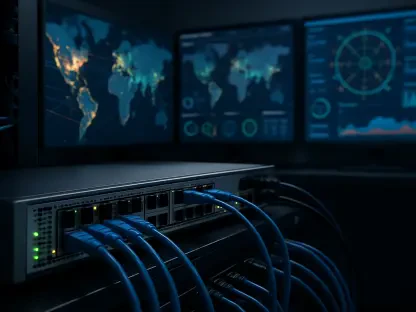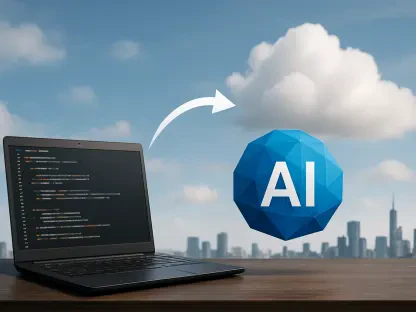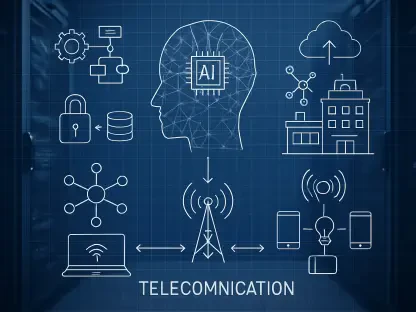In an era where technology evolves at breakneck speed, Gartner’s latest tech trends report, unveiled in late 2024, paints a vivid picture of enterprise innovation driven by hybrid computing architectures, offering a strategic blueprint for CIOs and IT leaders. This guide addresses the challenges of unprecedented data growth, the demand for instantaneous decision-making, and the complexities of a hyperconnected world. Hybrid systems, which seamlessly integrate edge, cloud, and quantum computing, stand as the cornerstone of this transformation, promising not just efficiency but a fundamental reimagining of how industries operate. From healthcare to logistics, the implications are profound, offering a glimpse into a landscape where performance and security are no longer trade-offs but complementary strengths. This report isn’t merely a forecast; it’s a call to action for organizations to rethink their IT frameworks and embrace a future where adaptability reigns supreme, setting the stage for a deeper exploration of the trends shaping this pivotal moment.
Emerging Paradigms in Tech
Hybrid Computing as the Foundation
Gartner has positioned hybrid computing as the paramount strategic trend for the current landscape, a fusion of edge, cloud, and quantum technologies designed to meet the intricate needs of modern enterprises. Unlike traditional single-paradigm systems that often falter under the weight of massive data volumes and real-time processing demands, hybrid architectures offer a balanced approach. Edge computing handles immediate, low-latency tasks, while cloud platforms provide scalable storage and analytics, and quantum elements tackle specialized, complex computations. This synergy ensures that industries can achieve optimal performance without sacrificing security or efficiency. Analyst insights emphasize that this is not a haphazard mix but a deliberate strategy to create systems capable of thriving in diverse environments, from factory floors to financial hubs, where every second and every byte counts in maintaining a competitive edge.
Beyond the technical integration, hybrid computing represents a philosophical shift in how organizations approach IT infrastructure. It’s about building ecosystems that are inherently flexible, allowing businesses to pivot swiftly in response to market changes or technological breakthroughs. This adaptability is critical in a world where disruptions—be they cyber threats or supply chain bottlenecks—can have cascading effects. By distributing workloads across edge, cloud, and quantum layers, companies can mitigate risks and ensure continuity even under strain. Examples abound, from manufacturing plants using hybrid setups to streamline production to retail giants optimizing inventory with real-time data flows. Gartner’s analysis suggests that embracing this model is less a choice and more a necessity for those aiming to lead rather than follow in their sectors, highlighting the urgency of retooling strategies now to harness these multifaceted systems.
Agentic AI and Real-Time Solutions
Agentic AI emerges as a transformative force within hybrid frameworks, redefining automation with its ability to act autonomously on behalf of users. These intelligent systems leverage the immediacy of edge computing for rapid responses while drawing on cloud resources for deep learning and complex analysis. In industries like logistics, where timing is everything, agentic AI can orchestrate delivery routes in real time, slashing delays and costs. Healthcare, too, benefits immensely, with AI-driven tools monitoring patient vitals via edge devices and syncing with cloud-based analytics for predictive insights. Gartner projects a significant uptick in adoption across sectors, driven by the need for efficiency in high-stakes environments. This integration not only boosts operational speed but also frees human resources for strategic tasks, marking a shift toward smarter, more responsive workflows.
The broader impact of agentic AI lies in its potential to personalize and scale solutions within hybrid ecosystems. Unlike static automation, these systems adapt to context, learning from each interaction to refine their actions. For instance, in customer service, agentic AI can handle inquiries with nuanced understanding, pulling data from cloud repositories while processing immediate inputs at the edge. This dual capability ensures seamless experiences even during peak demand. Moreover, the technology addresses critical pain points, such as reducing human error in decision-heavy fields like emergency response, where split-second choices save lives. As hybrid architectures provide the backbone for these AI systems, their deployment signals a maturing of enterprise tech, where autonomy and intelligence are no longer futuristic ideals but tangible tools reshaping daily operations across diverse industries.
Core Components of Hybrid Systems
Edge Computing: The Power of Proximity
Edge computing has evolved from a niche concept to a vital pillar of hybrid architectures, fundamentally changing how data is processed by bringing computation closer to its source. This proximity slashes latency, a game-changer for industries reliant on real-time insights, such as autonomous vehicles that must react instantly to road conditions. By handling critical tasks locally, edge devices minimize bandwidth strain and ensure uninterrupted performance, even in remote or unstable network conditions. The proliferation of 5G further amplifies this capability, enabling IoT ecosystems in smart cities and industrial settings to thrive with near-instantaneous data flows. Gartner underscores that edge is no longer optional but essential for any organization aiming to stay agile in a data-drenched environment, where delays can mean lost opportunities or compromised safety.
The resilience offered by edge computing within hybrid systems adds another layer of strategic value. When paired with cloud backups, edge setups create distributed networks that can withstand outages or cyber disruptions, ensuring continuity for mission-critical applications. Consider energy grids, where edge devices monitor infrastructure in real time, flagging issues before they escalate, while non-urgent data is offloaded to the cloud for long-term analysis. This balance not only enhances operational stability but also optimizes resource allocation, cutting costs associated with over-reliance on centralized servers. As industries increasingly adopt IoT solutions, the role of edge computing in hybrid models becomes a linchpin for scalability, allowing systems to expand without sacrificing speed or reliability, thus setting a new standard for technological robustness.
Cloud Evolution and Sovereignty
Cloud computing, a bedrock of modern IT, is undergoing a significant transformation with an emphasis on sovereignty and regulatory compliance in hybrid setups. Geopolitical tensions and stringent laws like GDPR have pushed organizations toward multi-cloud strategies and localized data solutions to avoid vendor lock-in and meet regional mandates. Sovereign clouds, which prioritize data residency within specific borders, are gaining traction as companies navigate a maze of legal requirements. This shift ensures that sensitive information remains under jurisdictional control, a critical factor for sectors like finance and government. Gartner notes that this evolution is not just about compliance but about building trust with stakeholders in an era where data breaches can erode confidence overnight, making sovereignty a strategic imperative.
The integration of quantum computing into cloud environments marks another frontier in this evolution, with major providers like AWS and Google pioneering quantum-as-a-service offerings. These platforms allow enterprises to experiment with quantum algorithms for specialized tasks, such as cryptographic analysis, without the prohibitive costs of dedicated hardware. Meanwhile, cloud systems continue to serve as the backbone for hybrid architectures, offering scalability that complements edge’s immediacy. The challenge lies in orchestrating these multi-layered setups to prevent silos, requiring robust governance to ensure seamless data flow. As regulatory landscapes tighten from 2025 onward, the push for interoperable cloud solutions will intensify, positioning hybrid systems as a bridge between innovation and accountability, ensuring that scalability does not come at the expense of control or security.
Future Frontiers
Quantum Computing’s Enterprise Leap
Quantum computing is transitioning from theoretical promise to practical relevance within hybrid architectures, marking a significant milestone in enterprise technology. Gartner highlights this year as a preparatory phase for integrating quantum capabilities, particularly for optimization challenges like supply chain logistics or financial modeling. Unlike classical systems, quantum computers excel at solving problems with vast variables, offering speed and precision unattainable by traditional means. Recent advancements in error correction, such as improved qubit stability, have brought this technology closer to commercial viability. While not yet mainstream, pilot projects across industries are laying the groundwork, demonstrating how quantum can complement cloud and edge components in hybrid setups, unlocking new possibilities for data-intensive operations.
The road to quantum adoption, however, is paved with challenges that hybrid systems are uniquely positioned to address. High costs, limited expertise, and hardware constraints mean that full-scale implementation remains on the horizon. Yet, quantum-inspired algorithms running on classical infrastructure offer a stepping stone, allowing organizations to build familiarity while awaiting broader accessibility. Within hybrid frameworks, quantum’s role is specialized, focusing on niche workloads while relying on cloud for scalability and edge for immediacy. Success stories, such as early adopters in pharmaceuticals using quantum simulations for drug discovery, underscore the potential for transformative impact. As investment in this space grows from 2025 to future years, hybrid architectures will serve as the testing ground, ensuring that quantum’s integration enhances rather than disrupts existing IT ecosystems.
Resilience and Security in Hybrid IT
Resilience stands as a defining feature of hybrid IT architectures, weaving together edge, cloud, and quantum elements to create systems that can endure disruptions. In a hyperconnected world, where downtime can cripple operations, the redundancy offered by distributed workloads is invaluable. For instance, in the energy sector, hybrid setups enable real-time grid monitoring at the edge, while cloud analytics predict long-term demand, and quantum simulations optimize resource allocation. This multi-layered approach mitigates risks, ensuring that a failure in one component doesn’t cascade across the system. Gartner emphasizes that such resilience is not a luxury but a necessity for industries facing escalating cyber threats and natural disruptions, positioning hybrid models as a safeguard for continuity in high-stakes environments.
Security, particularly through post-quantum cryptography, emerges as a critical companion to resilience in these architectures. As quantum computing advances, it poses potential risks to current encryption standards, necessitating new protocols to protect sensitive data. Standards from bodies like NIST are being adopted to future-proof hybrid systems, ensuring they remain secure against emerging threats. This proactive stance is vital for sectors like finance, where data integrity is paramount, and hybrid setups must balance innovation with protection. By integrating robust governance and cybersecurity measures, these systems not only withstand present challenges but also anticipate future vulnerabilities. Looking back, the strategic focus on resilience and security in hybrid IT underscored a pivotal shift, equipping enterprises to navigate uncertainties with confidence and foresight.









